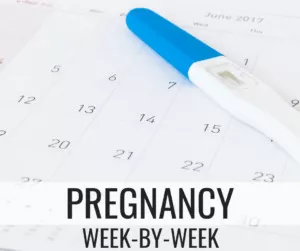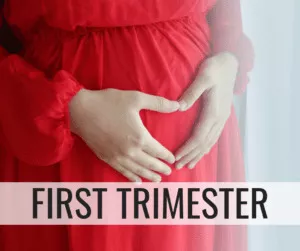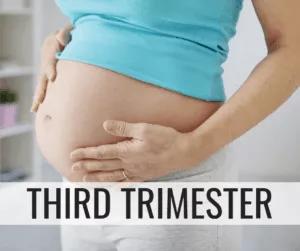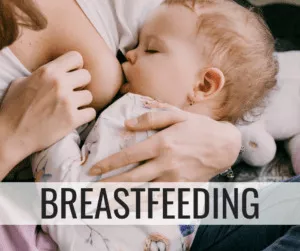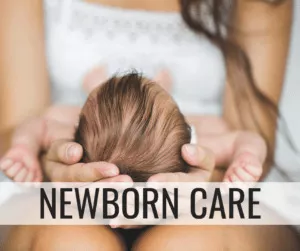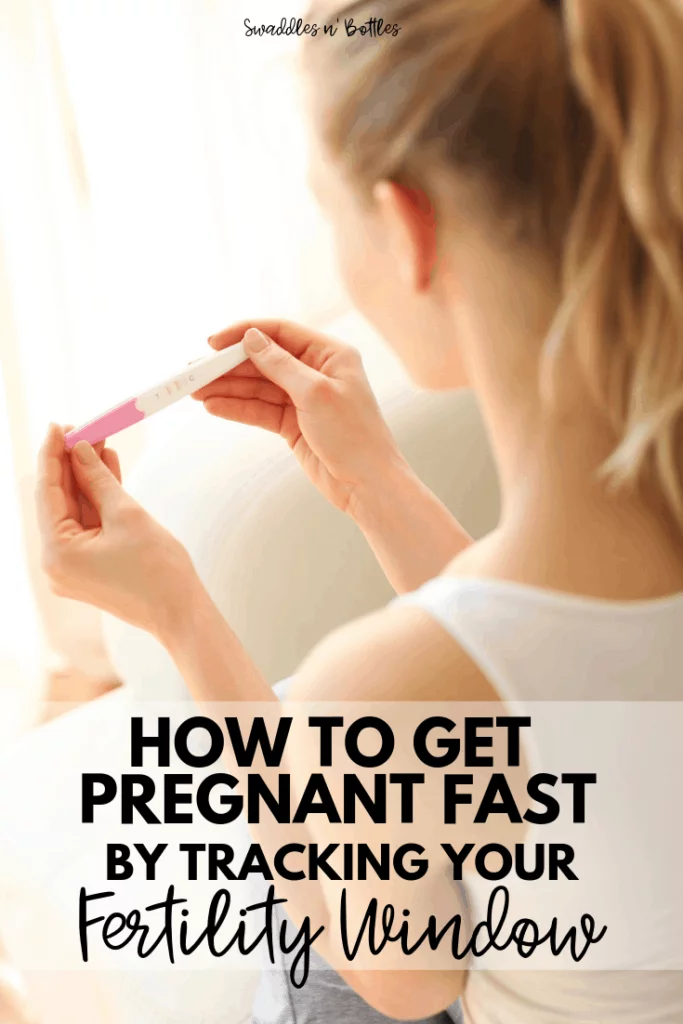
How to Find Your Fertility Window and Get Pregnant Faster
Are you ready to start planning for a baby? It is an exciting time, for sure! But many women worry about being able to get pregnant. One of the most common concerns is: Is it going to take a long time? This article will help you find your fertility window and help you get pregnant faster. Let’s get to it!
Fertility Window Definition
Each month of your menstrual cycle, there is only a small window of time when you can conceive. It is the time when your ovaries release an egg, or ovulation.
Ovulation typically occurs around day 14 of your menstrual cycle.
To clarify, your menstrual cycle is not just the week of your period. The first day of your menstrual cycle is the first day of your period. And it continues in a cyclical process each month, unless fertilization of an egg occurs. And that is also why when calculating how many weeks pregnant you are, they ask you when the first day of your last menstrual period was!
Every woman is different though. You may not necessarily always ovulate on day 14 of your menstrual cycle. And therefore, it is important to monitor your cycles using the techniques we are going to talk about here.
3 Ways to Find Your Fertility Window
There are different tools and ways you could go about finding your fertility window. In this article, I am going to explain three things you can do.
- Monitor your basal body temperature.
- Use ovulation predictor kits.
- Observe your cervical mucous.
It works best to do all three of these things. But each one serves its own unique purpose to helping you learn about your menstrual cycle and fertility window.
1. Basal Body Temperature
Your basal body temperature is your body temperature when you are at rest. So, when you are sleeping and not exerting any energy. Except the energy necessary for metabolism and other core functions.
How to take basal body temperature?
Monitoring and recording your basal body temperature is simple. First, you will need a thermometer that calculates to the 100thdecimal place. For example: 98.75 degrees Fahrenheit.
And next, you will want to keep the thermometer on your nightstand. That way you can easily take your temperature right when you wake up. It is best to do this before you even get out of bed. And before you have anything to eat or drink.
Your basal body temperature will vary slightly. And it is necessary to see the smallest of changes. Normally a temperature of 98.5 or 98.6 does not make any difference in the world. But in this case, you can have 9 different temperatures all within those two numbers! (98.51, 98.52, 98.53… you get my point, right?)
Basal Body Temperature for Ovulation
Those small changes in temperature are exactly what you need to record to start seeing trends. In the beginning of your menstrual cycle your temperatures will not vary much. And a sudden spike up in temperature indicates ovulation has occurred.
The most important thing to realize about monitoring your basal body temperature is this. You want to start doing it beforeyou start trying to get pregnant.
This is because once you see the temperature spike, you are late to the game. In other words, you would have needed to have sex the day before you see any temperature spike for the sperm to have time to meet the egg. Having sex after your temperature spikes, is after the egg has already been released and too late for fertilization to occur.
Basal Body Temperature in Pregnancy
Here is my basal body temperature charting from the month I got pregnant. I used the fertility friend app, and I highly recommend it. It’s a free app, you can learn more here.
Notice the beginning half of the graph (to the left of the vertical red line) the dots stay on or around the baseline (horizontal red line). Then on day 16 there is a sudden spike up in temperature. This tells me that I ovulated right on day 15 where you see that little dip (indicated with the red vertical line).
The days following you notice it drops back down. This has been described as a “fall-back rise”. It is all due to a sudden change in hormones. A fall-back rise is common to see approximately 72 hours after ovulation.
And then your temperatures will continue to stay elevated for the remainder of your menstrual cycle until your period begins. Or in the case of a positive pregnancy, the temperatures stay elevated (see the green lines on my chart).
2. Ovulation Predictor Kits (OPK’s)
An ovulation predictor kitis a strip that you dip in your urine and it detects for luteinizing hormone (LH). You can either buy digital or not, much like pregnancy tests. And they are readily available at any drugstore, Amazon, or (my favorite) the Wish app.
How to Use Ovulation Predictor Kits
Using these strips is super simple.
- Just take a small clean cup to catch some urine in.
- Then dip the strip in the urine for the allotted time indicated on the package (can vary by manufacturer, but usually only a few seconds).
- Observe the test strip for shade of darkness compared to the control line.
- Once the test line, is darker than the control line, ovulation will occur within 36 hours.
The important thing to understand about using OPK’s is this:
Unlike a pregnancy test, where you will only see a second line if it is positive, an OPK will always have a second line. Why? Because your urine always has some amount of LH in it.
What you are looking for is the test line to become darker than the control line.This indicates a surge of the LH. And once you see that, ovulation will occur within 36 hours.
Using these strip works best if you already have an idea of when your fertility window is. So, I would suggest mapping out your basal body temperatures for a month or two. And once you have an idea of when you tend to ovulate based on your temperature spike, start using the strips a few days before that.
Keep your strips(I know, I know… gross?). You can tape them down to a piece of paper, and then write the time and date next to each one. Compare the strips. And once you do this a few times you will see the test line start to darken gradually as you get closer to ovulation.
Unlike basal body temperatures, OPK’s let you know before you ovulate.This is an amazing benefit! So, once you see the test line is darker than the control line, you can plan to get to it (wink wink).
What about Digital OPK’s?
Digital OPK’s, you may have seen them, have a smiley face that will blink when you are getting close to ovulation and stay solid once you get the LH surge.
Seems straightforward right? Well, I used the digital OPK’s at the same time as the regular strip ones to compare. And I never got a solid smiley face.
Now, I obviously ovulated, because I conceived my daughter. And the regular strips showed me a darker test line than the control. So, I question the reliability of using digital OPK’s. I much prefer and recommend you spend less money on a more reliable method.
3. Cervical Mucous Changes
Maybe it’s the nurse in me, so don’t get squeamish on me here. But a great way to learn about your fertility window is to pay attention to your cervical mucous and how it changes throughout your menstrual cycle.
Our vaginas do amazing things. The mucous they produce is for a reason. Cervical mucous is to promote the best environment possible for sperm to survive, thrive and make their way up to the egg.
The time you are most fertile, you will notice your cervical mucous become very similar in consistency to egg whites. Don’t I make you excited to eat breakfast tomorrow?
But seriously, when you see this (clear, almost jelly-like) that indicates you are about to ovulate. So, hop to it!
To Wrap Things Up
Finding your fertility window is going to help you get pregnant faster. You can figure out when you ovulate using these methods and tools:
- Basal body temperature monitoring
- Ovulation predictor kits (OPK’s)
- Cervical mucous changes
I did all three of these things together and was able to conceive the first month trying! So, it does work! Let me know if you have any questions. And I wish you the best on your journey to conception!
Meet the Author
Hi there! My name is Tazia, and I am a wife, mother, and ER Registered Nurse. I blog over at Mind of Mom. My goal is to provide women with information on pregnancy, breastfeeding, infants, toddlers, and parenting. If there are questions to be asked, I seek the answer. Because the more you learn, the more you can grow. So, join me on this adventure called motherhood and let’s grow together!



